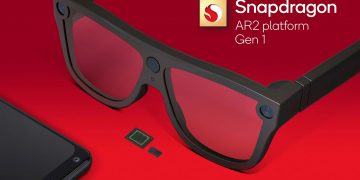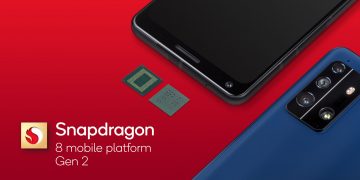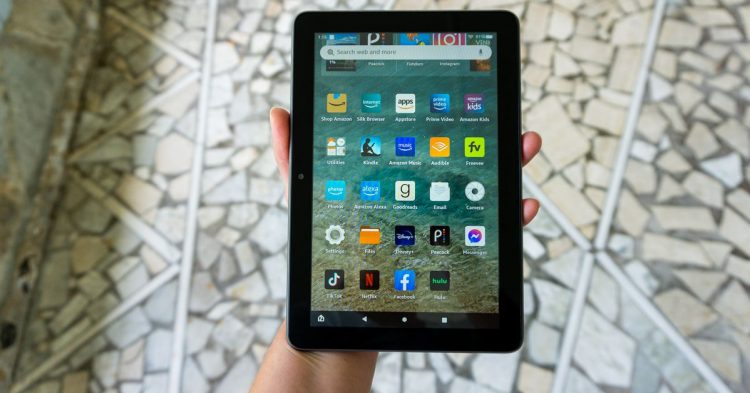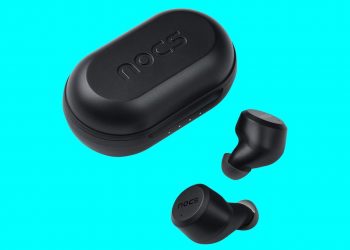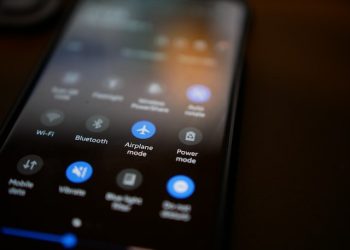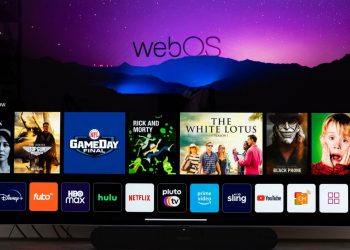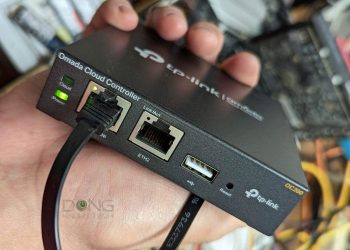Like other Amazon-branded tablets, the Fire HD 8 Plus tablet is a nice little device if you’re heavily invested in the e-commerce giant’s ecosystem. It comes with everything you need to manage Alexa-enabled devices, all while you get your fill of Amazon-branded entertainment with the preinstalled Prime Video, Amazon Music, Kindle, and Audible apps.
Amazon Fire HD 8 Plus (2022)
$119.99
The Good
- Pretty affordable
- USB-C and wireless charging
- Decent battery life
- A handy tablet for anyone with Prime and Amazon devices
The Bad
- Lock screen ads are not cool
- Poor camera quality
- Lack of Google apps, like YouTube
- Tinny-sounding speaker
The tablet comes in two flavors: the standard Fire HD 8 and the Fire HD 8 Plus, as well as versions with and without ads. While the Fire HD 8 Plus with ads (the one I’m reviewing) starts at $119.99, you’ll have to pay about $25 extra to remove lock screen ads — and I’d recommend that — putting its price at $134.99. Meanwhile, the standard Fire HD 8 model starts at $99.99 with ads (or $114.99 without). The main differences between the two devices are camera quality and RAM, with the Fire HD 8 Plus coming with marginally better cameras, 3GB of RAM instead of 2GB, and handy wireless charging capabilities.
As the “8” in its name implies, the Fire HD 8 Plus tablet features an eight-inch 1280 x 800 LCD display surrounded by a fairly solid plastic chassis in black, blue, or pink. The display itself isn’t the most impressive, as colors can appear dull when streaming, and the device’s maximum brightness just isn’t quite bright enough. Take the device outside on a sunny day, for example, and it’s difficult to make out anything on the screen. Even still, the display is good enough if you don’t care much about the vibrancy of what you’re streaming and if you just plan on using it indoors (or at least in some shade).
The 1280 x 800 LCD display isn’t bad, but colors can appear dull. Photo by Emma Roth / The Verge
On the inside, the tablet comes with 32GB or 64GB storage options (with the option to upgrade to 1TB with an SD card) and 3GB of RAM. It has a six-core processor that Amazon says is 30 percent faster than its predecessor. The tablet is speedier than I initially expected, but I found that you still have to wait several seconds when opening an app, which makes using the device a lot less fluid. I noticed more clunkiness when navigating my way around the tablet, as trying to scroll or select something becomes difficult when the device is in the middle of loading an app or webpage, with either function becoming noticeably laggy. The device is also slightly thinner and lighter than the 2020 model and features an upgraded camera, but that’s just about where the differences end.
Upon unlocking the tablet, you’re served with an ad that takes up your entire lock screen. (If you have larger fingers, you might even end up tapping it instead of actually unlocking the device.) The lock screen also has two other options in the bottom right and left corners that let you go directly to a menu to manage your connected devices or to a carousel of ads that Amazon calls “selected offers.” (If you just couldn’t get enough of the ones on your lock screen.) In my opinion, having ads directly on the lock screen just makes the tablet feel… cheap. I would recommend getting the ad-free model if you can, but I suppose it’s tolerable if you’re looking to save a little extra money.
The Android 11-based OS looks and feels dated compared to current smartphones
On the homepage, you’ll find the main For You, Home, and Library tabs, providing portals to a page filled with curated Amazon content and a list of your apps as well as your watchlists and downloaded content.
The tablet uses Fire OS 8, Amazon’s forked version of the two-year-old Android 11. Not only does the OS look and feel a bit outdated but also Google’s apps are notably absent from the Amazon Appstore. This means you can’t even download YouTube, which seems contradictory for a tablet focused on entertainment. The mountain of YouTube copycats on the Amazon Appstore is another issue; after searching for YouTube once, phony YouTube look-alikes populated my “Discover” feed on the tablet’s homescreen and in my recommended apps on the Appstore. (There are ways to sideload the Google Play Store onto the Fire 8, just like you’ve been able to do for years on Amazon’s older tablets, but that’s not exactly a straightforward process and outside the scope of this review.)
The headphone jack, USB-C, volume rockers, and power button. Photo by Emma Roth / The Verge
The lack of YouTube aside, the tablet is a solid device for streaming, especially if you pay $139 a year for Prime. It might take a little bit to actually open Prime Video or Peacock, but when the app finally loads, I can easily cue up a show or movie, and it doesn’t look all that bad, either. Sure, it’s no 4K screen and the video can appear a bit grainy at times, but it’s good enough for viewing while on the go or when lying in bed. If you are planning on watching something, though, make sure to grab a pair of headphones. The Fire HD 8 Plus comes with a headphone jack, and you should use it if you don’t want to subject yourself to the speaker’s tinny-sounding audio.
Accessing smart home controls is pretty simple, too. As I mentioned earlier, you can simply swipe the left tab on the lock screen to gain access to your connected devices, open the Amazon Alexa app, or use a voice command. Like Amazon’s other Fire tablets, you can also convert it into a smart display by swiping down on the screen and toggling on Show Mode. With this enabled, you can prop the device up on a dock or use its case as a stand and it becomes a cheaper version of the Amazon Echo Show.
But if you want to use the Fire HD 8 Plus for video calls, don’t expect the crisp camera quality that you might get on your phone or a high-end webcam. The Fire HD 8 Plus comes with a subpar 2MP front camera with 720p video and a rear 5MP camera with 1080p video, while the base model sports an even weaker 2MP front and rear camera with 720p HD video. Both the front and rear cameras capture unsurprisingly grainy photos and videos.
Show Mode basically turns the device into a cheaper version of the Amazon Echo Show. Photo by Emma Roth / The Verge
Amazon says its Fire HD 8 Plus tablet comes with up to 13 hours of battery life, and after playing around with the device for about a week, I can say that this estimate is about right. I didn’t have to charge the device all that much, and even when I do, I can just hook it up to the same charger I use for my Samsung phone, as it conveniently supports USB-C. (And, unlike other companies like Apple and Samsung, Amazon actually includes a cord and charging brick with the device.) The device takes about three hours to charge, and the same goes if you were to use it with the $49.99 wireless charging dock. It supports any Qi-certified wireless chargers as well. (Amazon has a full list of compatible devices here.)
In addition to the base Fire HD 8 and HD 8 Plus tablets, Amazon also sells the $149.99 Fire HD 8 Kids and Fire HD Kids Pro. The two devices have less storage, but they don’t come with lock screen ads and feature a sturdier case. They do, however, come with a two-year damage warranty and a one-year subscription to Amazon Kids Plus.
The tablet comes with a textured plastic backing. Photo by Emma Roth / The Verge
Overall, the Fire HD 8 Plus is a nifty little tablet, but you’ll really only find a use for it if you’re subscribed to Amazon Prime. At $119.99, you can think of it as a souped-up remote control for Alexa that comes with a few perks, like quick access to streaming, ebooks, and podcasts through Amazon’s ecosystem. It’s the perfect balance between the cheaper Amazon Fire 7 and Fire HD 10 tablets and, in my opinion, makes the most sense both price and feature-wise.
Agree to Continue: Amazon Fire HD 8 Plus (2022)
Like many tablets, Amazon’s Fire HD 8 Plus requires you to agree to a series of terms and conditions before you can use it — contracts that no one actually reads. It’s impossible for us to read and analyze every single one of these agreements. But we started counting exactly how many times you have to hit “agree” to use devices when we review them since these are agreements most people don’t read and definitely can’t negotiate.
When you first use your Fire HD 8 Plus, you’ll be asked to connect or create an Amazon account. When you set up or connect your Amazon account, Amazon will receive your email and billing address as well as your credit card number so you can buy and download content. You must also agree to the following terms:
In total, there are 11 mandatory agreements to use the Fire HD 8 Plus.
Source by www.theverge.com


